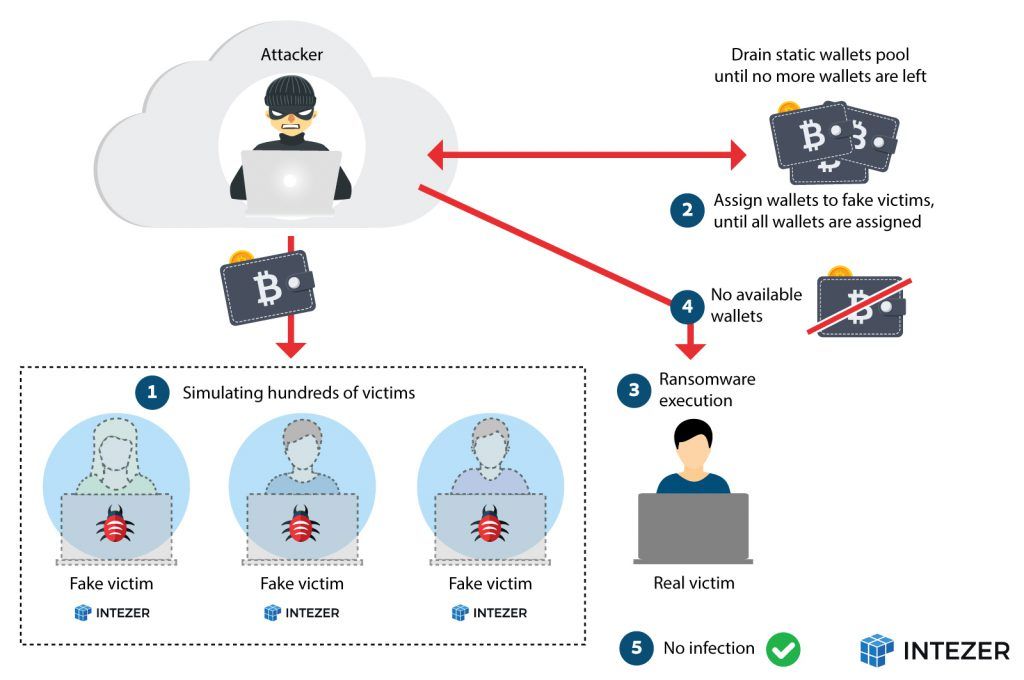

A new ransomware strain dubbed eCh0raix targeting Linux based QNAP Network Attached Storage (NAS) devices. The ransomware intended to infect and encrypt the files using AES encryption.
The malware written and compiled in Go programming language and has only 400 lines of code. It has a very low detection rate and it targets only Linux-based QNAP NAS servers.
QNAP is a Taiwanese company well-known for selling NAS servers for storage and media player functionality. Generally, the NAS servers are used to store a large amount of data and files.
The ransomware dubbed as “QNAPCrypt” by Intezer and “eCh0raix” by Anomali, it includes functions similar to the ransomware but contains several differences.
Once the malware executed it reaches out to the command and control server to notify the encryption process is to begin. Before encryption, it requests for wallet address and a public RSA from C&C server.


It communicates to the C2 server via a SOCKS5 Tor proxy and the data written from the C2 server is JSON-encoded. The ransomware encrypts the file using an AES-256 key and appends .encrypt extension to the encrypted files.
Before starting the encryption process it kills the following services in the infected NAS servers.
It encrypts following extensions
.dat.db0.dba.dbf.dbm.dbx.dcr.der.dll.dml.dmp.dng.doc.dot.dwg.dwk.dwt.dxf.dxg.ece.eml.epk.eps.erf.esm.ewp.far.fdb.fit.flv.fmp.fos.fpk.fsh.fwp.gdb.gho.gif.gne.gpg.gsp.gxk.hdm.hkx.htc.htm.htx.hxs.idc.idx.ifx.iqy.iso.itl.itm.iwd.iwi.jcz.jpe.jpg.jsp.jss.jst.jvs.jws.kdb.kdc.key.kit.ksd.lbc.lbf.lrf.ltx.lvl.lzh.m3u.m4a.map.max.mdb.mdf.mef.mht.mjs.mlx.mov.moz.mp3.mpd.mpp.mvc.mvr.myo.nba.nbf.ncf.ngc.nod.nrw.nsf.ntl.nv2.nxg.nzb.oam.odb.odc.odm.odp.ods.odt.ofx.olp.orf.oth.p12.p7b.p7c.pac.pak.pdb.pdd.pdf.pef.pem.pfx.pgp.php.png.pot.ppj.pps.ppt.prf.pro.psd.psk.psp.pst.psw.ptw.ptx.pub.qba.qbb.qbo.qbw.qbx.qdf.qfx
It also checks for the geolocation of the infected server, if the NAS severs is in Belarus, Ukraine, or Russia it exits the process with encrypting. Once it locked down the system it shows the following message.
The payment handled through Onion domain along with the unique RSA public key to be sent to the ransomware operator.
“We were able to collect a total of 1,091 unique wallets meant to be delivered to new victims distributed among 15 different campaigns.”
Administrators are recommended to restrict the external access to QNAP NAS device, use a strong password and ensure the device is up to date with security patches.
Bitcoin addresses
18C28bVEctVtVbwNytt4Uy6k7wxpysdDLH
1Fx7jev3dvHobdK8m3Jk6cA8SrfzjjLqvM
Samples
154dea7cace3d58c0ceccb5a3b8d7e0347674a0e76daffa9fa53578c036d9357 (DE)
3d7ebe73319a3435293838296fbb86c2e920fd0ccc9169285cc2c4d7fa3f120d (TW)
95d8d99c935895b665d7da2f3409b88f ( linux_cryptor)
URLs
http://sg3dwqfpnr4sl5hh[.]onion/api/GetAvailKeysByCampId/13
http://sg3dwqfpnr4sl5hh[.]onion/order/1LWqmP4oTjWS3ShfHWm1UjnvaLxfMr2kjm
http://sg3dwqfpnr4sl5hh[.]onion/static/
IP
192.99.206.61:65000
You can follow us on Linkedin, Twitter, Facebook for daily Cybersecurity updates also you can take the Best Cybersecurity course online to keep yourself updated.
Hackers Use Linux Malware HiddenWasp to Attack Linux Systems for Gaining Remote Access
StealthWorker Brute-force Malware Attack on Windows & Linux Platform Via Hacked E-commerce Websites
The volume of infostealer malware distributed through phishing emails has surged by 84% week-on-week in…
A division of Palo Alto Networks, have revealed a sophisticated scheme by North Korean IT…
Cybersecurity experts have observed an alarming increase in the use of SVG (Scalable Vector Graphics)…
DNS tunneling is a covert technique that cybercriminals use to bypass traditional network security measures…
The Akira ransomware group has intensified its operations, targeting over 350 organizations and claiming approximately…
Hybrid cloud environments, which blend on-premises infrastructure with public and private cloud services, have become…